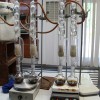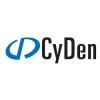| Base: | Council Directive 93/42/EEC of 14 June 1993 concerning medical devices OJ L 169 of 12 July 1993 |
| Modification: |
|

Welcome to gainspeed Ltd,
CE Marking Specialists
A South Wales based Product Certification and training company, specialising in supporting small to medium enterprises in meeting their CE Marking obligations
Specialists in EMC and Low Voltage
(Safety) Directives
We specialise in European and Worldwide approvals.
Flexible, Professional, and Affordable Service
We are a small organisation employing only
highly experienced associates.

| Base: | Council Directive 93/42/EEC of 14 June 1993 concerning medical devices OJ L 169 of 12 July 1993 |
| Modification: |
|

| Short name: | In vitro diagnostic medical devices |
| Base: | Directive 98/79/EC of the European Parliament and of the Council of 27 October 1998 on in vitro diagnostic medical devices OJ L 331 of 7 December 1998 |


A common example of this is the home power-line communication adapters commonly used to transfer broadband from one adapter plug to another anywhere in your home. It doesn’t suffer the problems associated with signal loss from walls and obstructions like WIFI. This makes it a great way to get internet from a source connection downstairs to an office upstairs, which normally would be to far away for WIFI signals to reach.
Its also popular in offices, apartments and hotels with some networks crossing across the threshold of properties via distribution networks and premises wiring. Typically transformers prevent propagating the signal, which requires multiple technologies to form very large networks.
Various data rates and frequencies are used in different situations.
In-home Power line communication apparatus (PLC) use the mains-electricity wiring in the home for communication by injecting differential-mode (DM) signals. However these signals have the potential to cause interference to the operation of radio or telecommunication apparatus.
To control this situation both radiated-emissions and conducted-emissions tests are now specified, and both are necessary as they control different things. EN 50561-3 applies to equipment that uses frequencies including those above 30 MHz in order to communicate. Procedures are given for the measurement of signals generated by the equipment and limits are specified within the frequency range 9 kHz to 400 GHz. No measurement is required at frequencies where no limits are specified.
The radiated emission requirements in this standard are not intended to be applicable to the intentional transmissions from a radio-transmitter as defined by the ITU, nor to any spurious emissions related to these intentional transmissions.
latest date by which this document has to be implemented at national level by publication of an identical national standard or by endorsement
(dop) 2016-11-23
latest date by which the national standards conflicting with this document have to be withdrawn
(dow) 2018-11-23
For more information contact us

“Gainspeed have been invaluable, in our international product roll-out.
In a number of difficult product approval markets, they have been able to establish what needed to be done and managed all aspects with minimum fuss.”
Stuart Jones
Director of Development
CyDen Ltd.”
Their web site is http://ipulse.co.uk

A Guidance document on the Low Voltage Directive transition from 2006/95/EC to 2014/35/EU is now available, with a list of frequently asked questions and answers.
This document is preliminary, pending finalisation of the revised Blue Guide (planned for end of 2015) and the LVD Guidelines (planned for mid-2016).
This document states:
“. . . . the main changes in the new Directive 2014/35/EU with respect to the previous Directive 2006/95/EC are quite limited, and do not concern the most substantial characteristics of the act that remain the same: scope, safety objectives, conformity assessment procedure.”
The main changes are the following:

